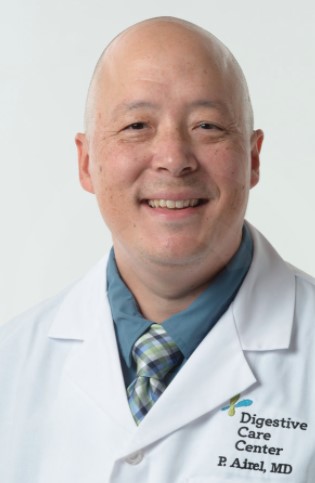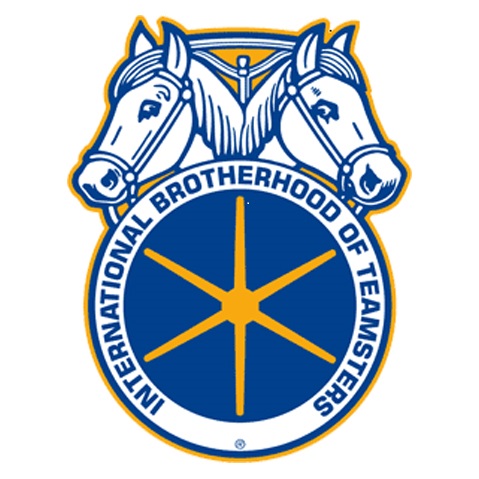Vincennes University Jasper’s Robotics and Construction programs receive State Earn and Learn Certification
Dr. Peter Airel Joins Digestive Care Center
Evansville – Digestive Care Center is proud to welcome Dr. Peter Airel to our team of exemplary Gastroenterologists, and now accepting patients. Dr. Airel comes to us with an extensive and distinguished military background, after completing his MD at Pennsylvania State College of Medicine and Graduate Medical Education Gastroenterology Fellowship at San Antonio Military Medical Center.Â
Dr. Airel served in the United States Air Force in numerous capacities but most notably as a Flight Surgeon, Deputy Chief of Medical Staff, acting Chief of Aerospace Medicine, and staff Gastroenterologist. He is a member of the American Board of Internal Medicine – Gastroenterology. Among other military honors, Dr. Airel received the Meritorious Service Medal, Air Force Commendation Medal, and the Navy & Marine Corps Commendation Medal twice.
Please join us as we welcome Dr. Airel’s family to our community and Dr. Airel to our staff, as we further our mission to provide the highest level of gastroenterology care in the region.Â
HEALTH DEPARTMENT UPDATES STATEWIDE COVID-19 CASE COUNTS
|
|
|
Weekend baseball schedule shuffled due to weather3
Aces and Salukis to open series Friday with doubleheader
Due to expected inclement weather, this weekend’s baseball schedule for Evansville’s non-conference series with Southern Illinois has undergone alterations.
The two sides will now play a doubleheader on Friday beginning with a nine-inning contest at 2 PM, followed by the seven-inning-game at 6 PM. On Saturday, the Aces and Salukis will meet for a single game at 1 PM, while Sunday’s single game at 1 PM remains unchanged.
All games will still be streamed on The Valley on ESPN.
Vanderburgh County Road to Recovery Meeting CANCELLED
 The Vanderburgh County Road to Recovery Committee , which may include a quorum of the Vanderburgh County Commissioners and Vanderburgh County Council, has CANCELLED its scheduled meeting on Thursday, May 6 at 3 p.m. in Exhibit Hall A at the Old National Events Plaza at 715 Locust Street, Evansville, Indiana, for the purposes of:Â
1) Vanderburgh County’s allocation from the American Rescue Plan ActÂ
Motorcycle Theft Suspects
 The Evansville Police Department is asking for help in locating two male suspects that were involved in stealing a motor vehicle. These two suspects are accomplices in a theft of a motorcycle that occurred in the 100 block of S. Barker on April 7.Â
One person has already been arrested in connection to this incident, but the other two have yet to be identified.Â
If anyone recognizes these people, they are asked to call the Evansville Police Department’s Auto Theft Unit at 812-436-7967, or the WeTip Line at 1-800-78-CRIME.Â


 Evansville to Switch Water Disinfectant May 10 Through June 28
 Evansville to Switch Water Disinfectant May 10 Through June 28
                                                                             EVANSVILLE, IND. – It happens twice a year, in spring and summer. The Evansville Water and Sewer Utility (EWSU) will temporarily change the disinfectant used in the water treatment process. This brief, scheduled change in disinfectant is a standard water-treatment practice to keep water mains clean and free of potentially harmful bacteria throughout the year.
Beginning Monday, May 10, and continuing through Monday, June 28, 2021, EWSU will be using free chlorine rather than the regularly used disinfectant (chloramine) during this period. This is the first of two disinfectant switchovers, with the second switch coming in August. A separate notice for the second switchover will be issued.
Here’s What You Should Know
What is Chloramine?
Chloramine is a disinfectant used in drinking water to remove bacteria and viruses that can make you sick. It is made up of chlorine and ammonia. ETSU has used chloramine as the disinfectant in its water treatment process since 1999.
What is Free Chlorine?
Free chlorine is a slightly more potent disinfectant than chloramine, and it is used to remove more resistant bacteria and viruses that may be found in the water distribution system.
Why would EWSU Convert from Chloramines to Free Chlorine?
State drinking water guidelines recommend that utilities using chloramine periodically switch to free chlorine for a while. The temporary use of chlorine will ensure that a proper level of disinfectant is maintained throughout the network of water mains and pipes that deliver your drinking water.
Free chlorine is a more aggressive disinfectant than chloramine. This temporary change in the water treatment process denies bacteria the ability to form resistance to the usual disinfection treatment process. Switching to free chlorine is a proactive step to ensure that we maintain optimal disinfectant levels in the water distribution system.
As always, the drinking water will be regularly monitored to ensure that the water delivered meets or exceeds federal Safe Drinking Water Act standards.
Why Does EWSU Use Chloramines Most of the Year?
While chlorine is an effective disinfectant, using chlorine alone creates byproducts that the U.S. Environmental Protection Agency regulates. These byproduct levels can be significantly and cost-effectively reduced through the use of chloramine. Also, chloramine has less smell than chlorine and remains in the distribution system longer to prevent bacterial growth. As such, chloramine is a better long-term choice as a regular disinfectant.
Will I Notice a Difference in My Water?
During this period, some customers may notice a slight change in the taste or smell of their tap water. Free chlorine may have more of a chemical odor, slightly like that of swimming pool water. Each customer has his or her sensitivity level to the taste or smell of free chlorine. Many detect no change at all. The mild chlorine taste and smell are typical and pose no health risk.
Are Free Chlorine and Chloraminated Water Safe?
Yes, both chlorine and chloramine are effective and safe for people and animals for drinking, cooking, bathing, watering the garden, and all other standard uses. However, precautions should be taken to remove or neutralize chloramine and free chlorine during the kidney dialysis process, in the preparation of water for fish tanks and ponds, and for businesses requiring highly processed water. A dechlorination procedure optimized for chloramine removal will work equally well with free chlorine.
People and businesses that typically take special precautions to remove chloramine from tap water (such as dialysis centers, medical facilities, and aquatic pet owners) should continue to take the same precautions during the temporary switch from chloramine to free chlorine.
Most customers will not need to take any precautions as the water remains safe to drink and is treated according to state and federal standards.
Information for Kidney Dialysis Patients
Just like chloramines, free chlorine must be removed from water used in kidney dialysis machines. EWSU has contacted representatives from the medical community to inform them of this temporary conversion. We advise customers who are dialysis patients to call their physicians or dialysis centers if there are any questions.
Information for Fish Owners
Like chloramine, free chlorine is toxic to fish. Fish owners need to remove chlorine, ammonia, and chloramine from the water before using with tropical fish. Local pet stores carry water conditioners that remove chloramine and free chlorine. If customers have questions, we recommend contacting their pet store for information and detailed instructions.
Â
Cleaner, Greener and Sustainable Energy is a Great Step Forward
Cleaner, Greener and Sustainable Energy is a Great Step Forward
Joe J. Wallace
It was recently revealed that CenterPoint Energy, the electric and gas utility provider for much of Greater Evansville and Southern Indiana is embarking on a mission to introduce more renewable energy technology into their generation operations. It was furthermore made known that CenterPoint Energy is adopting a number of Smart Energy strategies designed to provide cleaner power generation through investing in clean technologies and sophisticated management techniques to deliver cleaner, more reliable power to their customer base at competitive pricing. All of this is good news and will make the Tri-State more attractive to companies seeking locations that are not only cost-effective for their business operations that are concerned about environmental issues.
As a former resident who has been living in Southern California and working to advance renewable energy technologies, I applaud these commitments. The large solar generation facilities that CenterPoint Energy is planning have much potential for cost-effective clean power delivery. We have many facilities like this in the deserts and their status as static generators of electricity has been providing clean energy for over a decade now. Some of the recent projects are actually less expensive to operate than the fossil fuel generation stations that they are replacing.
Personally, I invested in rooftop solar on the carbon-neutral home we built when we moved to Palm Desert. In our case, our rooftop system paid for itself in roughly five years. With the 20+ year life of the solar panels, we are already enjoying the financial benefits of solar ownership. This ability to do this is enhanced by time-of-use billing that enables us to sell our solar power to our local provider during the day and to buy our evening power at reduced rates after the sun has gone down. Time-of-use rate structures accelerate the adoption of clean power at the residential level and there is little or no transmission required when the power generation is literally on the roof.Â
Smart Energy strategies often utilize multiple power generation sources along with managed energy storage solutions like batteries and pumped hydropower. In a pumped hydropower station, solar panels pump water into a reservoir that is utilized later for power generation much like a dam does when the power demand is needed. Storage is vital to an integrated solution to be reliable. One of the things that California could do a better job on is reliability as storage has not kept up with the transition to renewable power. As we all know, solar does not work when the sun is down and wind power does not work when the wind is not blowing at a sustained speed above what it needed to spin the blades. In most large wind turbines the minimum wind speed to sustain generation is between 12 and 14 miles per hour. Wind turbines also need to be throttled down when wind speeds are so high that the dynamic forces of rotation literally can destroy the turbines. Energy storage of some type is vital to an effective Smart Energy strategy.
When I was an engineering student at the University of Evansville, my interest was to seek a career in the nuclear power industry. During my junior year, the accident at Three Mile Island set off an emotional national reaction that was fueled by a movie named The China Syndrome. The American public went into a media-fueled paranoia that has led to the near demise of nuclear energy. That is a crying shame because nuclear energy has zero greenhouse gas emissions and has literally generated safe clean energy now for more than half a century. I will not be the least bit surprised to see nuclear come back into the Smart Energy strategies of power providers. Quite frankly, Hollywood manipulated the minds of Americans to rob us of clean energy long ago.Â
CenterPoint Energy is embarking upon a series of investments and strategies that have the potential to slowly transition Greater Evansville from dirty expensive solutions to clean affordable power. This is a path to prosperity that I most certainly want to encourage.
TEAMSTERS LOCAL 215 AWARDS $235,000 IN SCHOLARSHIPS TO LOCAL STUDENTS
Teamsters Local 215 Scholarship Fund Announces Scholarship Awards Of $235,000 For 2021
The Teamsters Local 215 Scholarship and Educational Trust Fund was established in 1998 by Teamsters Local 215 in conjunction with area employers that have collectively bargained contracts with Teamsters Local 215.
The Scholarship Fund was established as a Taft-Hartley Scholarship Fund which means there are an equal number of Employer Trustees and Union Trustees that administer the Fund. The current Employer Trustees are Gary Staley and Alan Braun and the current Union Trustees are Chuck Whobrey and Rick Voyles.
The Scholarship Fund is funded by employer contributions that are negotiated by Teamsters Local 215 into their collectively bargained contracts with various employers in the area.
Sons and Daughters of Teamsters Local 215 members that work for contributing employers are eligible to apply for scholarships from the Fund. They are eligible to apply annually for their first five years out of high school.
The Trustees appoint a scholarship selection committee that is made up of area educators that volunteer their time to this program. Retired University of Southern Indiana Vice PresidentÂ
Sherrianne Standley has chaired the selection committee for all but one year of the awards. The selection committee reviews the scholarship applications and recommends the scholarship awards and amounts. In applying for a scholarship, the applicant must provide their high school transcripts and if applicable, their college transcripts to date. They also must include an essay explaining why they are deserving of being awarded a scholarship.
Today, the Scholarship Fund is pleased to announce that it will be awarding 74 scholarships totaling $235, 000.00 to area students for the 2021-22 academic year.
The Fund is awarding ten (10) $5000.00 scholarships, four (4) $4500.00 scholarships, nineteen (19) $4000.00 scholarships, four (4) $3400.00 scholarships, twenty-two (22) $2600.00 scholarships and another fifteen (15) scholarships totaling $20,200.00.
Since the Scholarship Fund’s inception, it has awarded 2062 scholarships worth over $3,750,000.00.
A DETAILED BREAKDOWN CONCERNING THE NUMBERS AND THE DOLLAR AMOUNTS AWARD TO WORTHY ACADEMIC STUDENTS BY LOCAL TEAMSTERS 215 ARE POSTED BELOW:
|
AWARD |
NUMBER OF SCHOLARSHIPS |
AVG SCHOLARSHIP |
MAXIMUM |
TOTAL AMOUNT |
||
|
YEAR |
AWARDED |
AWARD |
AWARDED |
AWARDED |
||
|
1998 |
9 |
$ 1,555.00 | $2,500.00 | $14,000.00 | ||
|
1999 |
21 |
$ 1,190.00 | $1,500.00 | $25,000.00 | ||
|
2000 |
27 |
$ 1,481.00 | $2,000.00 | $40,000.00 | ||
|
2001 |
54 |
$ 926.00 | $2,000.00 | $50,000.00 | ||
|
2002 |
64 |
$ 1,015.00 | $2,500.00 | $65,000.00 | ||
|
2003 |
67 |
$ 1,343.00 | $2,750.00 | $90,000.00 | ||
|
2004 |
76 |
$ 1,447.00 | $3,000.00 | $110,000.00 | ||
|
2005 |
90 |
$ 1,444.00 | $3,300.00 | $130,000.00 | ||
|
2006 |
94 |
$ 1,596.00 | $3,500.00 | $150,000.00 | ||
|
2007 |
100 |
$ 1,650.00 | $3,750.00 | $165,000.00 | ||
|
2008 |
124 |
$ 1,613.00 | $4,000.00 | $200,000.00 | ||
|
2009 |
125 |
$ 1,774.00 | $4,000.00 | $221,750.00 | ||
|
2010 |
131 |
$ 1,680.00 | $4,000.00 | $220,050.00 | ||
|
2011 |
143 |
$ 1,399.00 | $4,000.00 | $200,000.00 | ||
|
2012 |
123 |
$ 1,505.00 | $3,300.00 | $185,125.00 | ||
|
2013 |
113 |
$ 1,593.00 | $4,000.00 | $180,050.00 | ||
|
2014 |
97 |
$ 1,856.00 | $4,000.00 | $180,000.00 | ||
|
2015 |
109 |
$ 1,789.00 | $3,200.00 | $195,000.00 | ||
|
2016 |
85 |
$ 2,353.00 | $4,000.00 | $200,000.00 | ||
|
2017 |
86 |
$ 2,442.00 | $4,000.00 | $210,000.00 | ||
|
2018 |
87 |
$ 2,586.00 | $4,500.00 | $225,000.00 | ||
|
2019 |
84 |
$ 2,679.00 | $4,500.00 | $225,000.00 | ||
|
2020 |
79 |
$ 2,975.00 | $5,000.00 | $235,000.00 | ||
|
2021 |
74 |
$ 3,176.00 | $5,000.00 | $235,000.00 | ||
| TOTAL |
2062 |
$ 1,819.10 | $ 3,750,975.00 |









